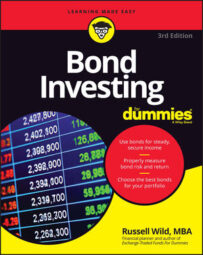When comparing different kinds of bonds — or any investments, for that matter — it helps to know the standard deviation. This is the most oft-used measure of risk when comparing investments.
What does it mean? An investment with a standard deviation of, say, 3 will give you a return that is within one standard deviation (in this case, 3 percentage points) of the mean about two-thirds of the time. So suppose you have a bond fund that has an historical average annual return of 6 percent, and you know that the standard deviation is 3.
What that means is that two-thirds of the time, the return from this bond fund will fall somewhere between 9 percent (6 percent average return + 3 percent standard deviation) and 3 percent (6 percent average return – 3 percent standard deviation). If that same bond fund had a standard deviation of 5, the returns you could expect would generally fall between 11 percent and 1 percent.
Is a high standard deviation good or bad? That depends on how much volatility you can stomach and how much return you need to get.
Morningstar Principia software enables you to readily find the ten-year standard deviation for any bond fund (which means how volatile the funds have been for the past ten years). Following are a few examples. The higher the number, the greater the price swings in years past and the greater the price swings, most likely, in years to come.
In the world of bonds, the greatest factors affecting volatility are the maturity of the bonds and the stability of interest rates. The price of long-term bonds tends to be much more volatile than the price of short-term bonds.
But the quality of the bonds matters, too. High-yield (junk) bonds tend to be more volatile. And foreign bonds, denominated in other currencies, also tend to be more volatile due to currency flux.
To help put things in perspective, the ten-year standard deviation for the stocks of the S&P 500, an index of the 500 largest companies in the United States, stands at 15.9. As you can see, not even the most volatile categories of bonds are as volatile as that. And the S&P 500 is considerably less volatile than certain other investments, such as tech stocks, small-company stocks, and oil futures.
| Name of Fund | Type of Bonds in Fund | Ten-Year Standard Deviation |
|---|---|---|
| Fidelity New Markets Income | Emerging-market bonds, dollar denominated | 11.15 |
| Vanguard Long-Term U.S. Treasury | Government bonds with average maturity of 20 years | 11.13 |
| T. Rowe Price International Bond Fund | International bonds with average maturity of 8 years | 9.12 |
| Vanguard High-Yield Tax-Exempt | Municipal bonds of various grades with average maturity of 8 years | 5.33 |
| Vanguard GNMA | Government-backed bonds with average maturity of 7 years | 2.96 |
| Vanguard Short-Term Bond Index | Investment-grade corporate bonds with average maturity of 3 years | 2.24 |

